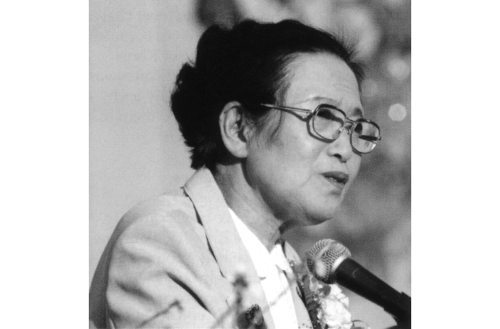As soon as Gautama died, a council of the monks was convened to decide what the scriptures were to be the scriptures.
The rules of monastic discipline, the sermons which Buddha preached, and a manual of Buddhist metaphysics and psychology became the "Three Baskets" of the canon.
A century later, a second council, called to debate the proper interpretation of the rules of discipline, led to a split between the conservative majority of monks and a liberal minority.
A third council convened by Emperor Asoka tried to restore the original purity of the faith, revise the teachings, and confirm the canon. By this time, Buddhism had virtually divided into Northern (Mahayana) and Southern (Theravada) schools.
The Pali canon, written in the Pali language of north India, represents the sacred literature of the Theravada monks. Most scholars believe that it is closest to the original Buddhist teachings.
However, the Pali canon was transmitted orally for about five hundred years and not reduced to writing until the reign of the Ceylonese king Vattagamani (29-17 B.C.).
In the Three Baskets of the Law one finds 227 rules binding on all Buddhist monks, the "Sutta of the Great Decease" about the Buddha's last three months on earth, the sermon on the turning of the Wheel, a manual of Buddhist ethics, a collection of psalms of the brethren, and the Jataka tales which contain various animal fables and stories of the previous lives of the Buddha.
Most famous of all is a section called the Dhammapada, a 423-stanza guidebook of morality which represents the core of Theravada teaching about( enlightenment through absolute self-reliance. Theravada Buddhists do not limit their sacred writings to the Three Baskets of the Law.
Of post-canonical writings, perhaps the best known is a book entitled "Questions of King Milinda," inquiries about Buddhism by the Bactrian Greek monarch Menander, which Thai monks treat as scripture.
Also, noteworthy is the "Path of Purity" (Visuddhi-magga) produced by Buddhaghosa, an Indian monk of the fifth century A.D. residing in Ceylon.
The most important Mahayana scriptures exist in Sanskrit and other Oriental languages.
Among the especially distinctive books are:
Amida Sutra—a Chinese version of the smaller Sukhavativyuha Sutra, Sukhavativyuha Sutra—the fundamental Sutra of Pure Land Buddhism, Amitayurdhyana Sutra—setting forth the meditation of Amitabha, Mahavairocana (Sun-deity) Sutra—the fundamental scripture of tantric Buddhism, Mulamadhyamika Sastra—a treatise by Nagarjuna, the fundamental text of the Madhyamika school (Middle Path school),
Prajnaparamitahridaya Sutra—the essence of The Discourse on Perfect Wisdom, Saddharma Pundarika Sutra—The Lotus of the Wonderful Law, setting forth the doctrine of the One Vehicle and the Eternal Buddha,
Vijnaptimatratasiddhi—a treatise on Vijnanavada (mind-consciousness) doctrine, Avatamsaka Sutra—the main treatise of The Flower Garland school, Vimalakirtinirdesa Sutra—setting forth Buddhism for laymen.
In addition, the Vajracchedika (diamond) Sutra is important for Zen Buddhism.
The Buddhist community as a whole has no common Bible, at least nothing like the authorized King James Version of the English-speaking Protestants.
In theory, most Buddhists—except Zen monks—esteem the scriptures as the supreme source of knowledge and the standard by which everything should be tested. Yet the Northern and Southern schools have always disagreed as to which writings belong in the canon.
Writings revered by the Mahayana are rejected by the Theravada as later creations that do not reflect the teachings of Gautama. For the latter, only the Pali Baskets (Tripitaka) are authoritative.
Hence, one must conclude that, "even though almost all Buddhists base their faith on the scriptures, there is no one scripture which is accepted as having the same authority for everyone who calls himself a Buddhist."
In general, Buddhism is not a religion of the Book in the way fundamentalist Protestantism or Islam is. This is partly because the Buddha himself rejected the authority of the Vedas, the Hindu scriptures of his day.
He stressed the value of independent inquiry and focused on the importance of a practical path to enlightenment. In addition, Buddhism thrived in a part of the world where the vast majority of people were illiterate.
For them, their religion was to follow the path trod by Gautama, obeying the moral regulations he established and belonging to the community he founded. While philosophic discussion and meditation upon sacred texts have been a notable feature of Buddhist life for many centuries, neither is truly central to the faith.
Some modern Buddhists, like the British writer Christmas Humphreys, take a certain pride in the fact that their religion has no Bible. Buddhism, they say, recognizes no authority—human or divine—for what is true. For 1500 years, Buddhist scriptures have grown steadily.
All the materials have in common is that they stem from Buddha's enlightenment and are based on the Four Noble Truths he taught. The canon is not closed. If it begins with the sermons of the Buddha, it also includes commentaries made a millennium later and the teachings of Buddhist sages down to the present day.
For such broad-minded followers of the Middle Path, not one word in the traditional sacred books is dogmatically presented. Buddhism is unique, they affirm, in that disciples would refuse to take even their Master's actual words as binding on them.
In the absence of all claim to authority or the least suggestion of dogma, Buddhism is not bound to any event in history, and its tolerance for different points of view is unlimited.

